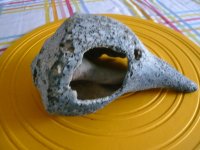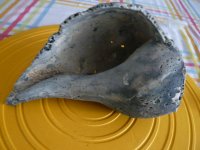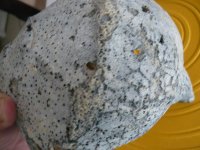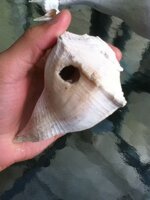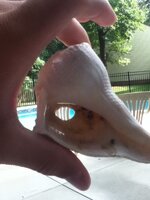BeachComber7
Sr. Member
- May 12, 2012
- 461
- 66
- Detector(s) used
- Bounty Hunter Pioneer and Tesoro deLeon
- Primary Interest:
- All Treasure Hunting
Before I posted this, I checked on line to see other shells and it seems the holes to extract the meat and use the shell as a tool, vary in size. This was found last year on the beach. I don't know how to check the shell to see if it was used as a tool though but in any case, it's a nice whelk!
Attachments
Upvote
0


